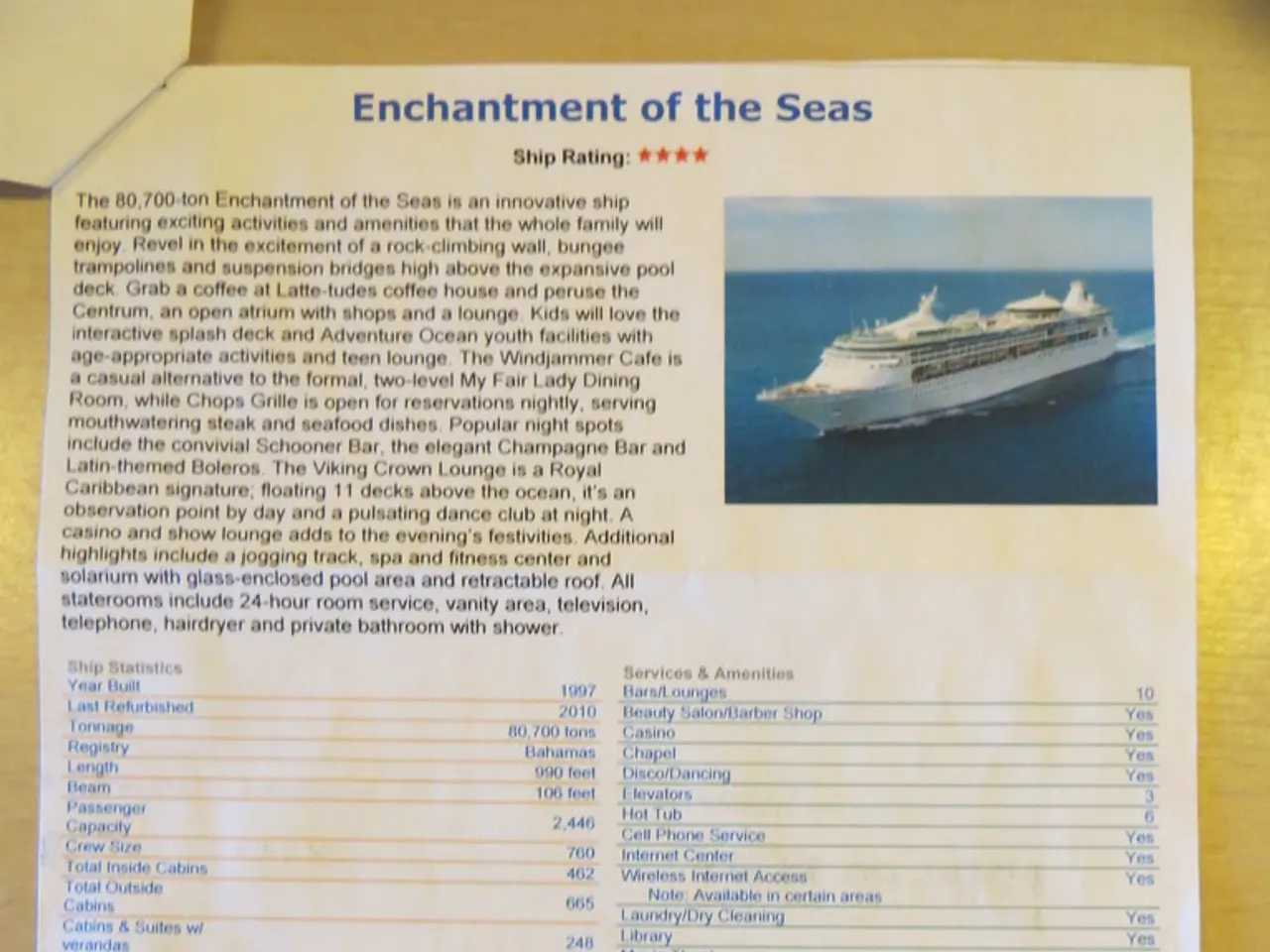The Final Shift Away from Paper Navigation Maps: Embracing Electronic Navigational Charts Completely
The United States' National Oceanic and Atmospheric Administration (NOAA) has announced its plan to phase out its entire suite of traditional paper nautical charts by the end of 2026. This move is part of NOAA's modernization efforts to provide mariners with improved and more timely digital navigational products.
NOAA is ending production of traditional paper charts to enable the creation and maintenance of higher quality, more up-to-date, larger scale (more detailed), electronic navigational chart coverage and other ENC-based products and services. The agency's ambitious program aims to replace much of the existing ENC coverage with more detailed data, quadrupling the number of ENCs in the product suite.
Currently, NOAA nautical chart products include over 1,000 traditional paper and raster charts, over 2,000 ENCs, and ten volumes of the U.S. Coast PilotTM sailing directions. In addition to traditional paper charts, NOAA produces three other products from the same raster images used to make paper charts. These are raster navigational charts (RNC), full-sized images of nautical charts in portable document format (PDF), and NOAA BookletChartsTM - reduced-size replicas of nautical charts that have been divided into a dozen or more 81⁄2 x 11-inch pages for home printers.
NOAA is carrying out this transition to digital navigation to enhance safety and efficiency in marine navigation. Mariners are encouraged to adopt ENCs and the related digital tools NOAA offers to ensure safe and current navigation, as paper charts will no longer be updated after the phase-out date.
The International Hydrographic Organization (IHO) has developed a new "S-101 ENC" that will eventually replace the "S-57 ENC" data currently used for navigation. NOAA is collaborating with several other hydrographic offices in the IHO Nautical Cartography Working Group's Baseline Symbology Project Team to create standardized digital symbology and portrayal rules for paper chart renderings from ENC data.
Topographic contours and road networks, which were not typically compiled on NOAA ENCs, are now being added to the new ENCs, something that users have been requesting for some time. The NOAA Custom Chart application provides a traditional paper chart-like rendering of ENC data, allowing users to create their own customized nautical charts directly from the latest NOAA ENC data.
A new NOAA Chart Display Service portrays ENC data using symbology and colors more familiar to paper chart users, either as an online basemap or to download data tiles for offline applications. Sales of NOAA paper nautical charts have dropped nearly 60% since 2010, reflecting the growing preference for digital navigation solutions.
In 2022, the USCG intends to publish an Advance Notice of Proposed Rulemaking (ANPRM) for "Electronic Chart and Navigational Equipment Carriage Requirements." The International Maritime Organization (IMO) and the International Convention for the Safety of Life at Sea (SOLAS) now require nearly all commercial ships on international voyages to use an Electronic Chart Display and Information System (ECDIS) with ENCs for route planning and navigation while underway.
NOAA has shut down three raster chart web map services: the NOAA RNC Viewer, the RNC Seamless Service, and the RNC Tile Service. The agency has expanded its online ENC Display Services to support various platforms that use NOAA raster charts as a basemap for the display of other data.
The phase-out of traditional paper nautical charts is not a sudden change. NOAA is cancelling 20 to 30 paper and raster charts per month, generally cancelling larger scale charts first. Depth contours are being recompiled in meters, eliminating conversion errors and other complications since U.S. hydrographic survey data is collected and processed in meters. Each new ENC covers a smaller footprint, enabling greater chart production efficiency and quadrupling the number of ENCs in the product suite.
This transition timeline roughly targets the end of 2026 for complete phase-out of paper charts, pushing digital navigation as the primary standard. Mariners are advised to prepare for this by transitioning to ENCs and related electronic navigation systems.
NOAA is developing a new S-101 ENC to replace the existing S-57 ENC, aiming to provide standardized digital symbology through collaboration with other hydrographic offices. This effort is part of NOAA's aim to enhance digital navigational products and services, including hydrographic survey and nautical charting.
As the USCG prepares to publish an ANPRM for Electronic Chart and Navigational Equipment Carriage Requirements in 2022, smart-home-devices and gadgets may soon integrate technology for seamless digital navigation solutions, following the trend set by the NOAA's move towards more efficient, safer, and updated nautical charting.




